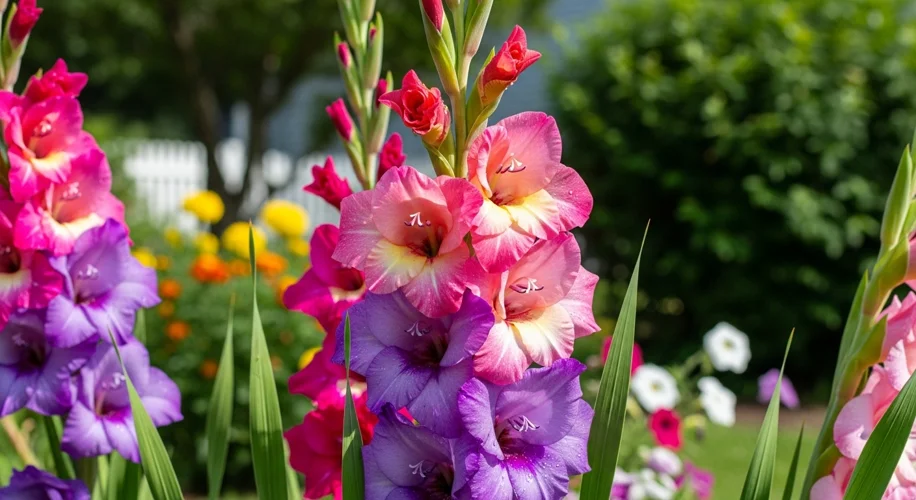Hello fellow garden lovers!
Elias here, back from my garden with a bit of a spotlight on a flower that truly deserves its moment in the sun: the gladiolus. You might know them as the ‘sword lily’ because of their tall, elegant spikes of blooms, and let me tell you, they are an absolute showstopper.
My fascination with gladiolas started a few years back when I was looking for something with a bit of drama and long-lasting color. These flowers deliver, and then some! They bring such vertical interest to the garden, and the range of colors available is just incredible – from fiery reds and oranges to soft pastels and crisp whites. Plus, they make fantastic cut flowers, bringing that garden beauty right into your home.
If you’re thinking of adding these beauties to your patch, you’ll be pleased to know they’re not overly complicated to grow. It’s all about starting with healthy corms (which are like bulbs). You want to plant them in the spring, after the last frost has passed and the soil has warmed up a bit. I usually aim for a depth of about 4-6 inches, with the pointed end facing upwards. They do best in full sun, so pick a spot that gets at least six hours of direct sunlight daily. Good drainage is also key – they don’t like soggy feet!
One of the things I love about gladiolas is their staggered bloom time. If you plant them in batches every couple of weeks through late spring and early summer, you can enjoy blooms for an extended period. It’s a simple trick that really pays off.
As they grow, you might notice those tall stalks starting to lean, especially after a good rain or wind. This is where staking comes in. A simple bamboo stake or even just some natural twine tied loosely to a support can make all the difference in keeping your gladiolas upright and looking their best. It prevents the heavy flower heads from breaking the stems.
When it comes to feeding, I typically give mine a good start with some compost mixed into the soil when planting. Once they start to grow, a balanced, low-nitrogen fertilizer every month or so helps fuel those glorious blooms. Too much nitrogen, though, and you’ll get lots of leafy growth but fewer flowers, so keep that in mind.
Pruning isn’t really a thing for gladiolas in the way it is for, say, roses. The main thing is deadheading: as soon as a flower on the spike starts to fade, you snip it off. This encourages the plant to put its energy into the remaining buds rather than seed production. Once all the flowers on a stalk have faded, you can cut the whole stalk down at the base.
After the growing season, in the fall, you can choose to leave the corms in the ground in milder climates, or dig them up for storage over winter in colder regions. I’m in a zone where I usually dig them up, let them dry, and store them in a cool, dark, dry place like a paper bag or mesh sack. Come spring, it’s like opening a treasure chest!
Gladiolas are more than just a pretty face; they’re a testament to nature’s artistry. They bring a sense of occasion to the garden, and their vibrant colors have a way of lifting spirits. So, if you’re looking to add some pizzazz and elegance to your summer blooms, give the gladiolus a try. You might just find your new garden favorite.
Happy gardening!

